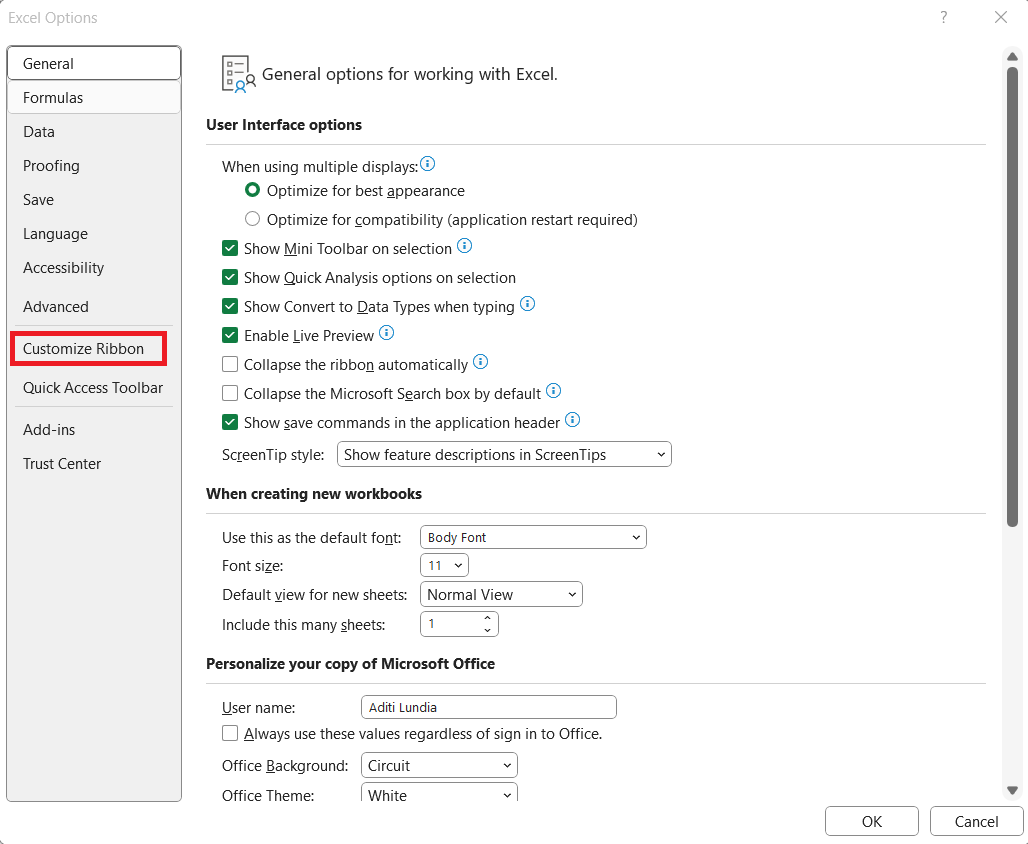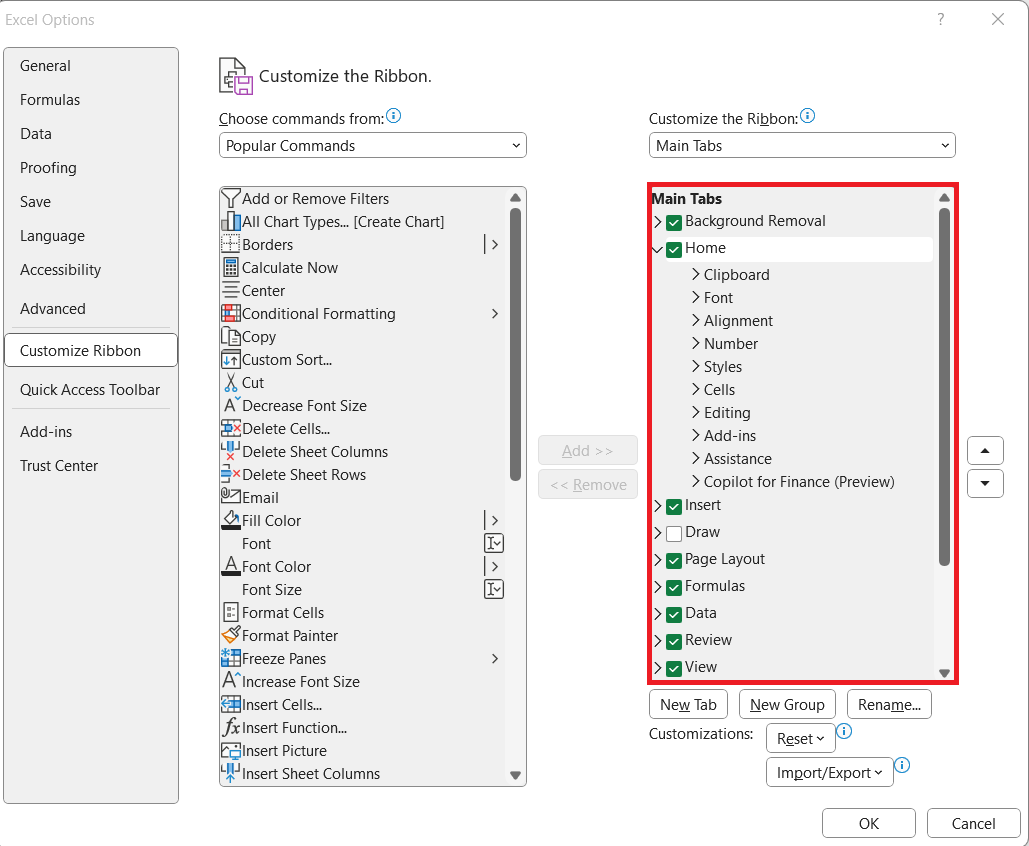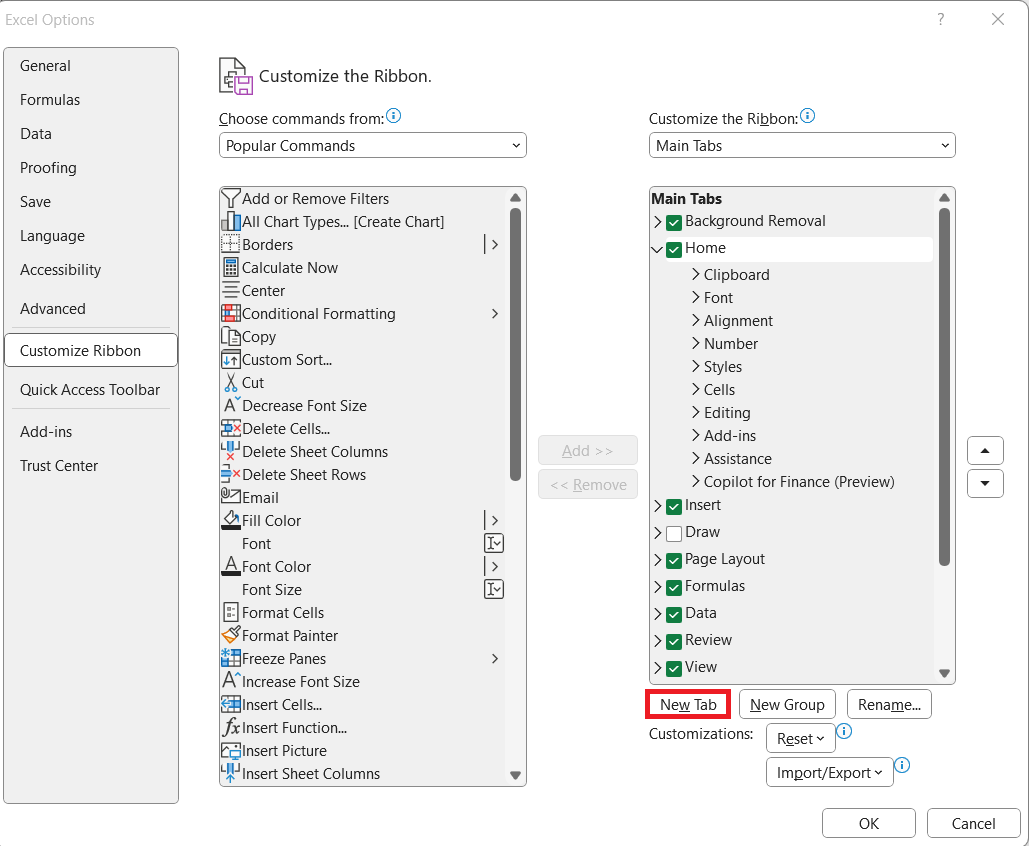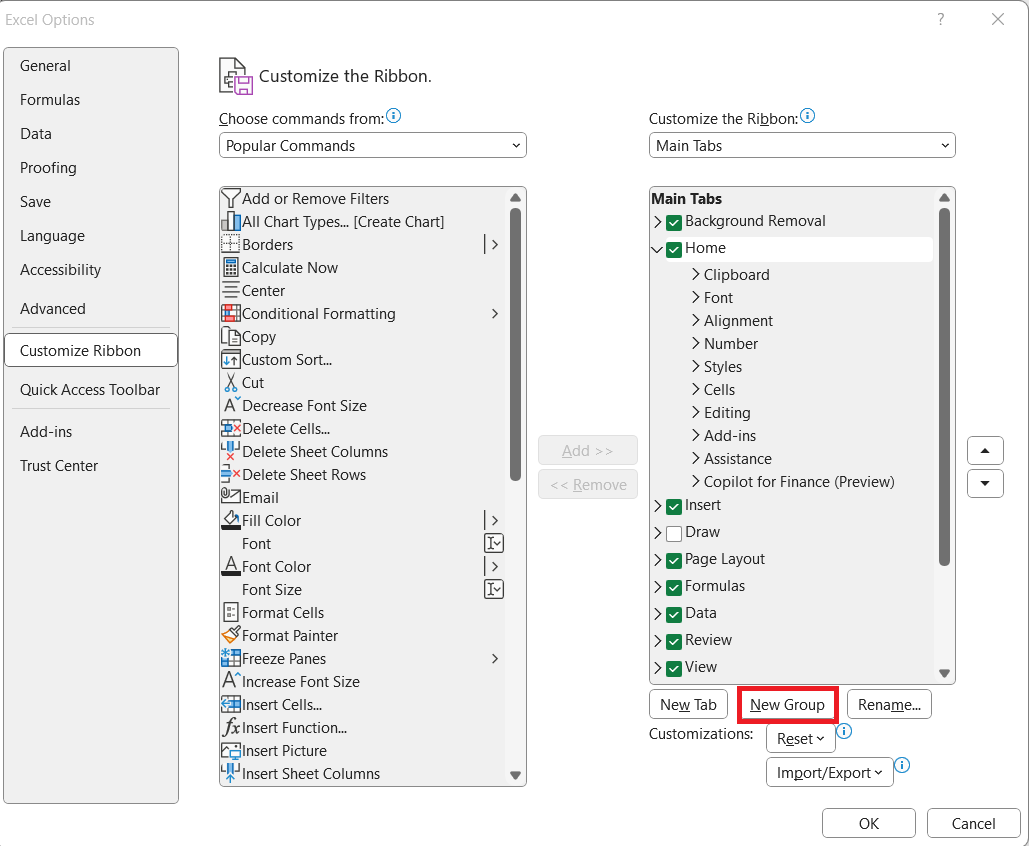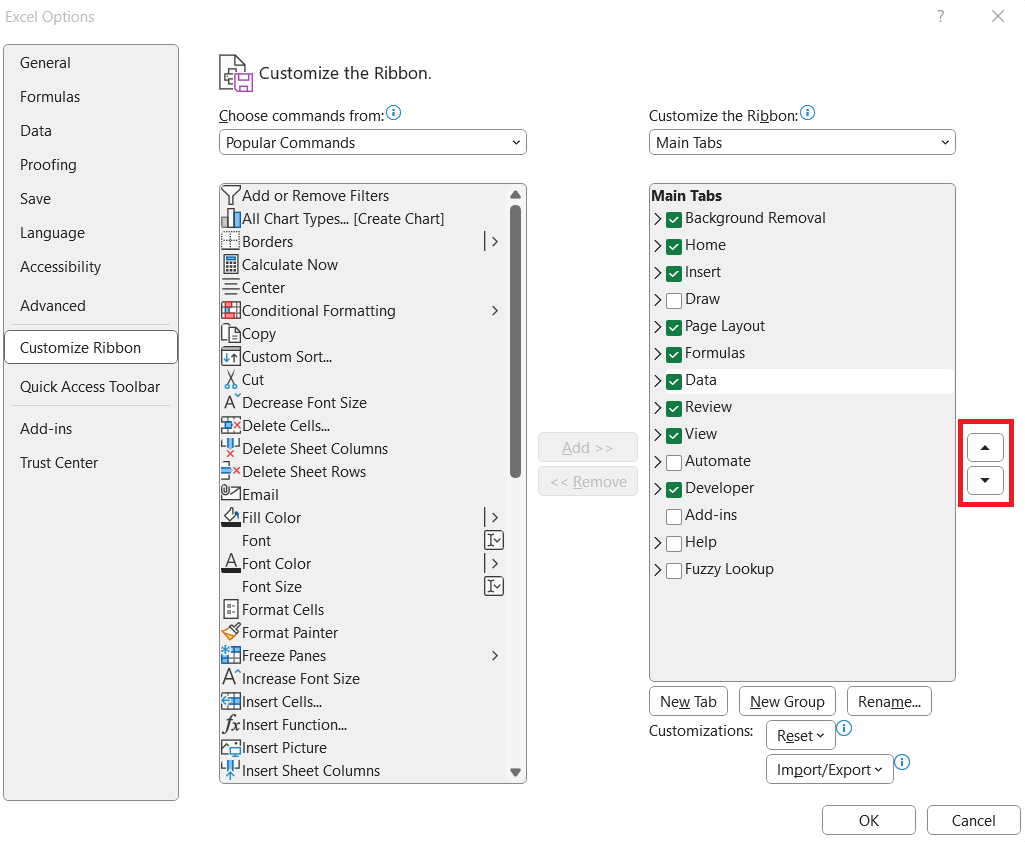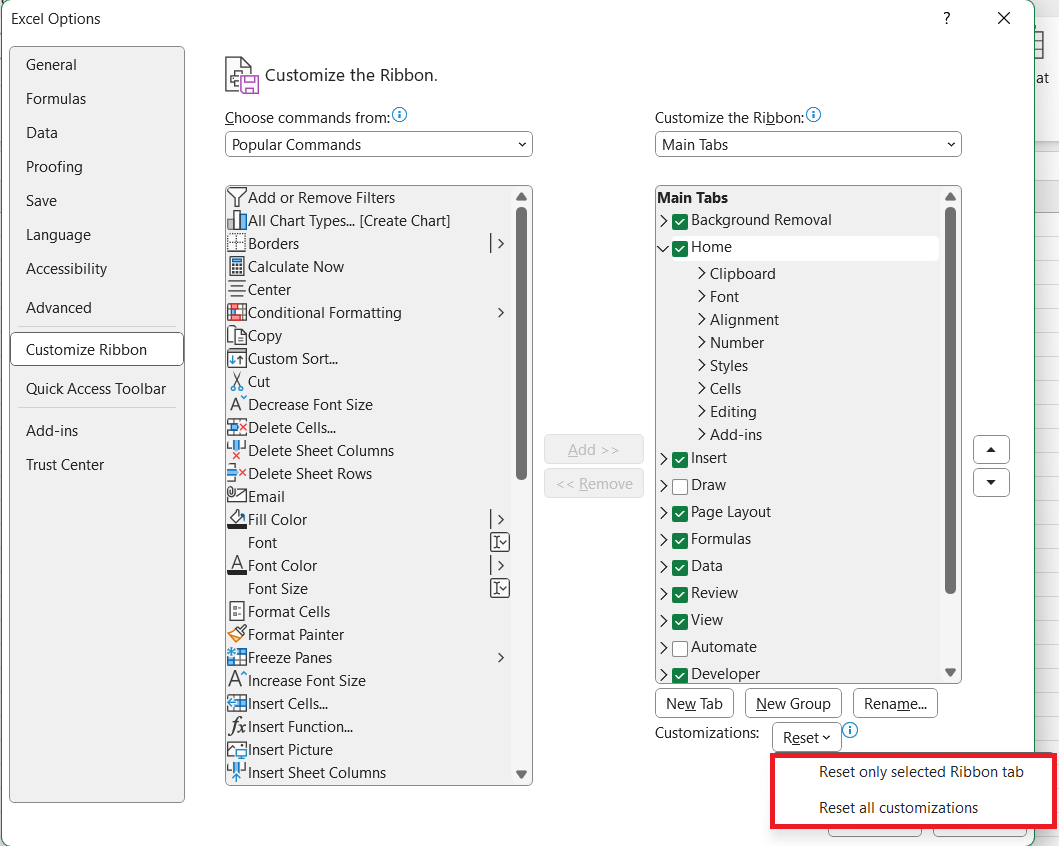The Ribbon in Excel is a central feature that provides users with quick access to various tools and commands. Located at the top of the Excel interface, it organizes these tools into tabs and groups, making it easier to navigate and find functions for data analysis, formatting, and more. Understanding how to effectively use the Ribbon can significantly enhance your productivity in Excel. In this article, we’ll cover the Excel ribbon guide and explore its structure, functionality, and customization options.
Key Takeaways:
- The Ribbon in Excel is the central hub for accessing tools and commands quickly.
- It is organized into tabs and groups for streamlined navigation and efficiency.
- Mastering the Ribbon can significantly enhance productivity by reducing the need for menu navigation.
- The Ribbon is highly customizable, allowing users to tailor it to their specific workflow needs.
- Understanding Ribbon features elevates Excel skills, turning repetitive tasks into automated processes.
Table of Contents
Introducing the Excel Ribbon Interface
The Heart of Excel’s User Interface
As we explore the Excel Ribbon, it’s crucial to understand that it’s not just a part of the program—it’s the central hub for productivity. The Ribbon’s structured design seamlessly integrates with the way we process tasks, categorizing functions into logical groups.
Every action you require from Excel, whether inputting data, formatting, or running complex calculations, begins at this multifaceted tool.
Key Benefits of Mastering the Ribbon
Mastering the Excel Ribbon presents an array of benefits to us as users, significantly enhancing our competence and efficiency. The immediate advantage I notice is the time saved by having critical features at my fingertips, which greatly reduces the need for navigating through complex menus.
Moreover, the Ribbon’s intuitive arrangement means less time is spent searching for tools and more time analyzing data. An additional benefit lies in the customizable nature of the Ribbon, allowing us to tailor the interface to our workflow, and ultimately, the deep understanding of Ribbon functionalities elevates our Excel skills, turning repetitive tasks into automated processes with a simple click or keystroke.
Navigating the Ribbon’s Core Tabs
File Tab: Your Gateway to Excel Files
The File tab in Excel is our gateway to a vast range of file-related commands. It opens up what’s known as the ‘backstage view’ — a full menu dedicated to managing Excel files and options. I see it as the control center for handling workbooks.
Whether it’s creating a new document, opening recent workbooks, getting detailed info on files, saving our work, printing sheets, sharing online, or closing a workbook, the File tab contains all these essential functionalities.
It’s also where we access Excel’s Options to tinker with settings and manage accounts, ensuring our experience with Excel is smoothly personalized to fit our needs.
Home Tab: The Center for Basic Functionality
The Home tab is where we often find ourselves most frequently when working with Excel. It’s the epicenter of basic functionality and includes an assortment of tools organized into several convenient groups.
From copying and pasting elements in the Clipboard group to sprucing fonts and alignments in their respective groups, everything necessary for the day-to-day editing and formatting of cells is housed here.
Data management is a breeze with the Editing group, providing access to functions like AutoSum and the powerful Sort & Filter. The Home tab truly embodies the utility knife of Excel’s ribbon—equipping us with all the elemental commands to execute tasks swiftly and with precision.
Internalizing the layout and functionality of this tab is tantamount to becoming proficient in Excel.
Utilizing the Excel Ribbon for Advanced Features
Insert Tab: Enriching Worksheets with Objects
The Insert Tab is where we enhance our worksheets with various objects that bring our data to life.
I use it to insert pivot tables for complex data analysis or to add visuals like images, charts, and shapes to present data in a more engaging manner. The options don’t end there; I can also insert hyperlinks, headers, footers, and text boxes providing a depth of customization to both the appearance and functionality of my work.
The beauty of the Insert Tab lies in how it grants the ability to elevate a simple spreadsheet into a comprehensive report. With capabilities like Sparklines to succinctly visualize trends and the addition of mathematical symbols or equations, the potential for professional and clear data presentation is limitless.
Data and Review Tabs: Managing and Securing Data
When I delve into data management and security, the Data and Review tabs become my go-to resources. The Data tab opens the door to a suite of tools for manipulating and analyzing large datasets.
I can import data from various sources, create connections to external databases, refine data with sort and filter options, and even utilize the Power Query for in-depth data cleansing. The Analysis tool, when added, uncovers a treasure trove of statistical analysis opportunities, such as regression and ANOVA.
On the other hand, the Review tab serves as the stronghold for workbook security and collaboration.
It’s where I spell-check my content, add comments for team reviews, and protect sheets or the workbook with passwords. The ability to track changes is invaluable during collaborative projects, ensuring that all edits are monitored and controlled effectively.
Personalizing Your Excel Experience
Customizing the Ribbon to Streamline Workflows
Streamlining workflows in Excel is much simpler once you customize the Ribbon to fit your precise needs. I frequently add, reorder, and remove tabs and commands to match the specific functions I use daily.
Creating a custom tab filled with my go-to commands or groups can make tasks like financial modeling or data analysis much quicker. I can also hide tabs that I seldom use to keep the Ribbon clutter-free and focused on my tasks at hand.
Here’s how I customize the ribbon in Excel, step by step:
STEP 1: Open Excel and go to the File tab.
STEP 2: Select Options at the bottom of the menu.
STEP 3: In the Excel Options window, click on Customize Ribbon.
STEP 4: On the right, check or uncheck tabs to show or hide them.
STEP 5: If I want a new tab, I click New Tab and rename it.
STEP 6: I add groups by selecting New Group under my new tab. I choose commands from the left panel and click Add to move them to my custom tab or group.
STEP 7: Use the Up and Down arrows to rearrange the tabs or groups.
STEP 8: Click OK to save my changes.
Now my custom ribbon is ready in Excel!
Pro Tips for Excel Ribbon Mastery
Shortcut Keys for Swift Navigation
Using shortcut keys for swift navigation is like having superpowers in Excel. For instance, the quick pressing of ‘Ctrl’ + ‘C’ and ‘Ctrl’ + ‘V’ for copy-paste operations is second nature to me, but there’s so much more. ‘Ctrl’ + ‘Arrow Key’ zooms my selection to the edge of the data in a worksheet, while ‘Alt’ + ‘E’, ‘S’, ‘V’ opens up the Paste Special dialog—a tool I couldn’t live without. And when I need to switch between open workbooks, ‘Ctrl’ + ‘Tab’ does the trick smoothly.
Memorizing these key combos allows me to breeze through Excel tasks without lifting my fingers from the keyboard to reach for the mouse. The result? A flowing, more efficient data management experience that saves precious time.
Resetting Your Custom Ribbon Layout
Resetting my customized Ribbon layout is sometimes necessary when I want to start afresh or troubleshoot issues.
To reset the whole Ribbon to its default, I use the ‘Reset all customizations’ option in the ‘Customize the Ribbon’ window. If I only want to reset a specific tab, I select ‘Reset only selected Ribbon tab’—a handy feature when I need to correct or undo changes to a particular section without affecting my other customizations.
It should be noted that resetting the Ribbon also reverts my Quick Access Toolbar to its default state.
Solving Common Problems with the Excel Ribbon
Restoring a Missing or Hidden Ribbon
Restoring a missing or hidden Ribbon in Excel requires just a few simple steps. If all commands have disappeared and only the tab names are showing, I regain full visibility by pressing ‘Ctrl’ + ‘F1’—a quick fix that toggles the Ribbon’s expansion.
If the entire Ribbon seems to have vanished, I look for the Ribbon Display Options button for restoring the ribbon in Microsoft 365:
- I click the Ribbon Display Options icon at the top-right corner of the window.
- I choose Always Show Ribbon to display the full ribbon with all tabs and commands.
- If I only want the tabs to appear, I select Show Tabs Only.
- To enter Full-Screen Mode, I can choose that option, hiding the ribbon and tabs entirely.
These options help me control how the ribbon appears in my workspace!
FAQ: Excel Ribbon Explained
What is Excel Ribbon?
The Excel Ribbon is a user interface element that houses all the commands and features in a set of tabs. Each tab on the Ribbon has different groups that contain related items and functionality, making it easier to find and use Excel’s features efficiently.
What is the Purpose of Contextual Ribbon Tabs in Excel?
Contextual Ribbon Tabs in Excel provide task-specific tools that automatically appear when you select certain items like tables, charts, or images, offering quick access to relevant features for editing and formatting these objects.
How Can I Quickly Access Features Not on My Excel Ribbon?
For features not present on my Excel Ribbon, I can quickly access them by adding the commands to the Quick Access Toolbar or using the ‘Tell Me’ search bar to find and execute them without navigating through the tabs.
Is It Possible to Share a Customized Ribbon with Colleagues?
Yes, it is possible to share a customized Ribbon with colleagues. We can export our Ribbon settings to a file and then share that file with our colleagues, who can import it into their Excel setup.
How do I reset the Excel ribbon to its default settings?
To reset the Excel Ribbon to its default settings, we go to ‘Excel Options’, choose ‘Customize the Ribbon’, then click ‘Reset’, and select ‘Reset all customizations’. Confirm by clicking ‘Yes’ and then ‘OK’.
John Michaloudis is a former accountant and finance analyst at General Electric, a Microsoft MVP since 2020, an Amazon #1 bestselling author of 4 Microsoft Excel books and teacher of Microsoft Excel & Office over at his flagship MyExcelOnline Academy Online Course.









